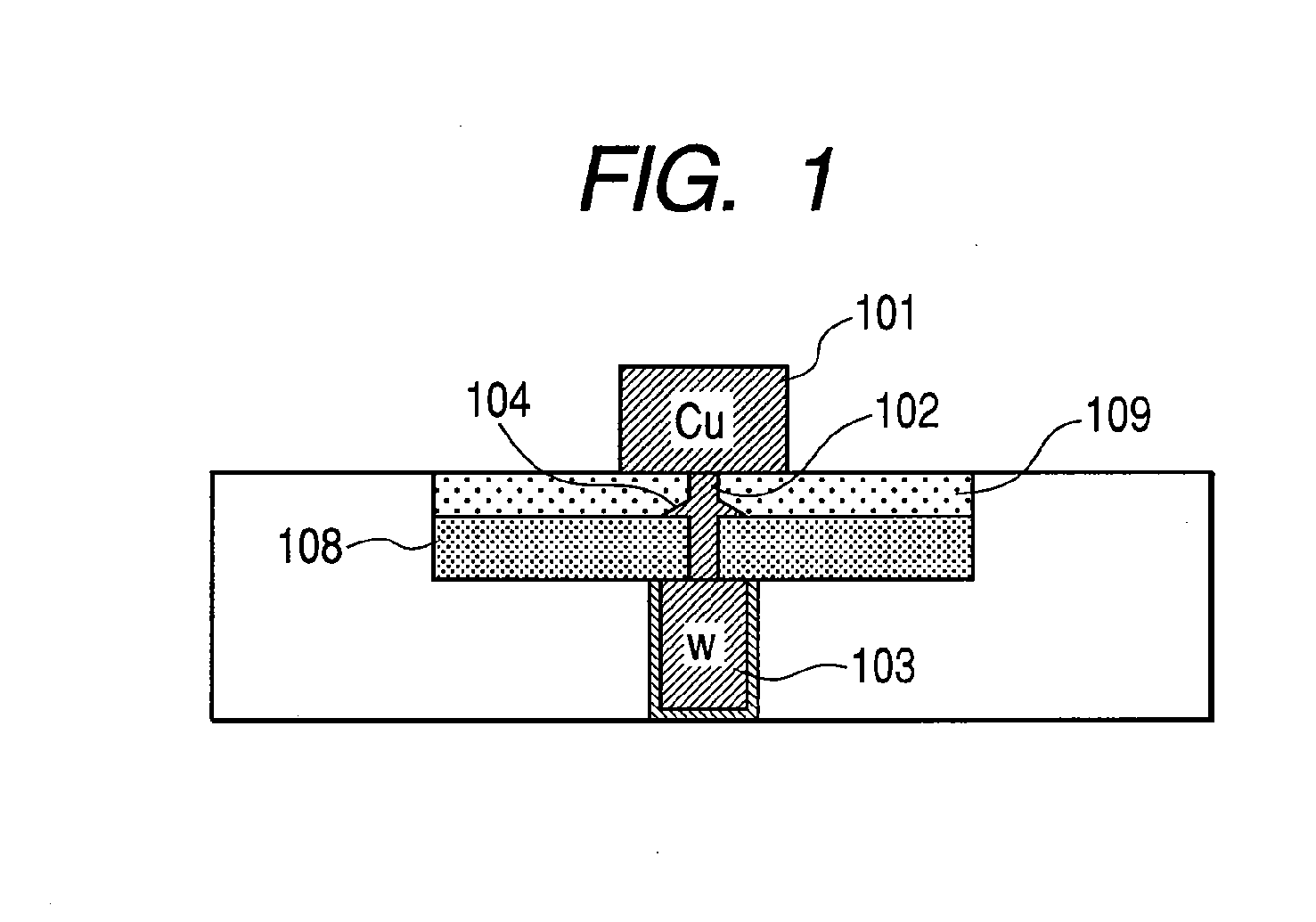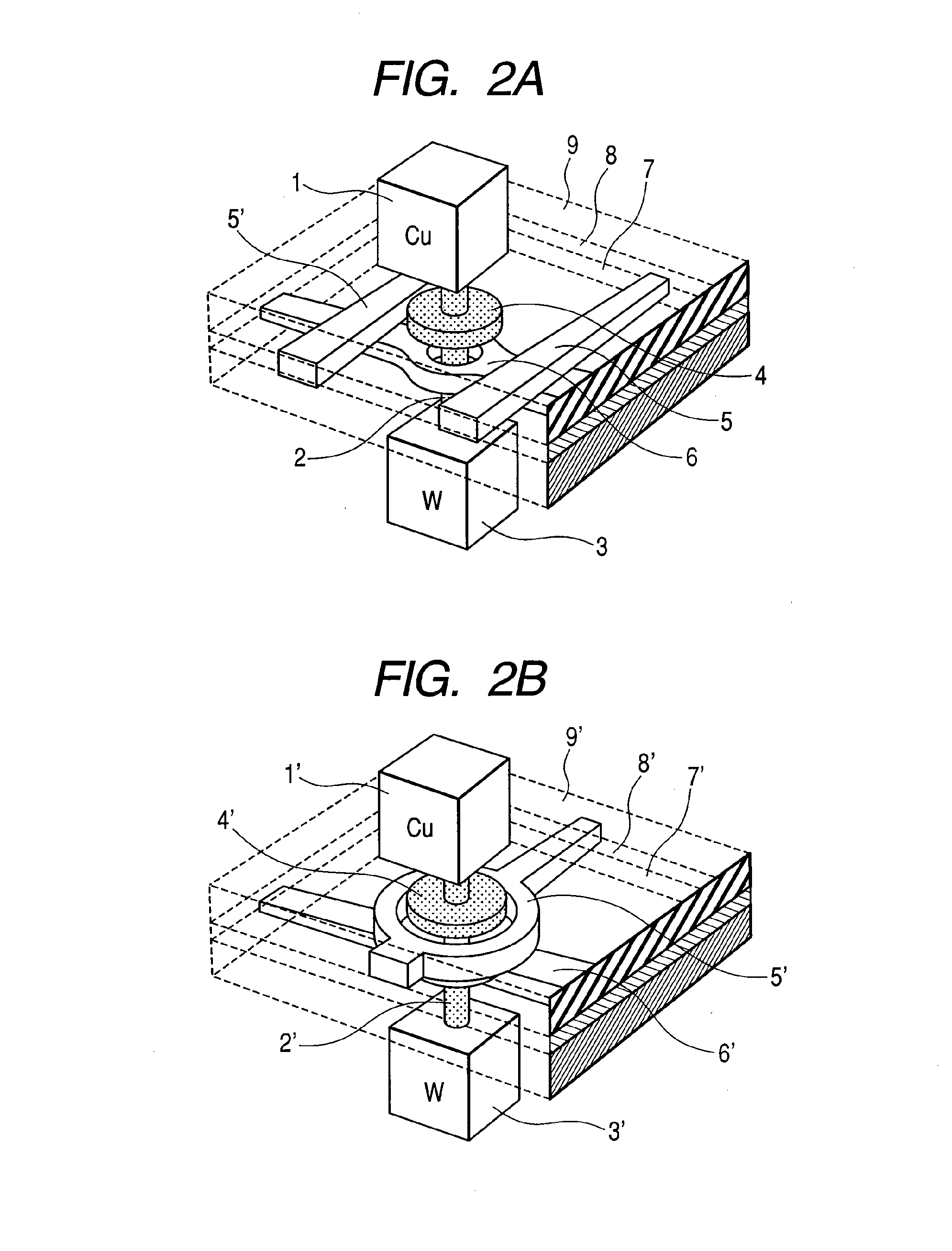Semiconductor device
a technology of semiconductor devices and semiconductors, applied in semiconductor devices, digital storage, instruments, etc., can solve problems such as uneven diffusion of metal ions, electrolytic layer, and unstable rewriting characteristics
- Summary
- Abstract
- Description
- Claims
- Application Information
AI Technical Summary
Benefits of technology
Problems solved by technology
Method used
Image
Examples
first embodiment
[0068]In this first embodiment, the semiconductor device includes a memory elements, and the material and structure employed for the memory elements are the main features of the present invention.
(Basic Structure of the Memory Element)
[0069]FIG. 1 shows a cross sectional view of the basic structure of a memory element in this first embodiment. The memory element includes a lower electrode 103 formed on a semiconductor substrate; an upper electrode 101 formed on the semiconductor substrate; two layers (solid electrolytic layers 108 and 109) formed on the semiconductor substrate between the upper and lower electrodes 101 and 103. Furthermore, a conductive path is formed in a solid electrolytic layer on a path connecting the upper and lower electrodes to each other and a conductive material accumulating region 104 is formed near the phase boundary between the two solid electrolytic layers.
[0070]FIG. 2 shows a bird's-eye view of the memory element in this first embodiment. The memory el...
second embodiment
(Three-Dimensional Matrix Structure)
[0152]In this second embodiment, multiple layers having different components respectively are deposited between a pair of electrodes and a high conductivity path is formed with a voltage applied between those electrodes. Information is recorded in each object memory cell by changing the resistance value between the above pair of electrodes or between other electrodes that are disposed orthogonal to the above paired electrodes.
[0153]In this second embodiment, a region for accumulating a conductivity improving component is formed in the middle of the high conductivity path.
[0154]In this second embodiment, there are a plurality of regions for accumulating a conductivity improving component respectively between a pair of electrodes.
[0155]Each region for accumulating a conductivity improving component corresponds to recorded information.
[0156]At each phase boundary described above is formed a small lump of element used to form a high conductivity path ...
third embodiment
[0171]In this third embodiment, at least part of the high conductivity path described above is formed with an angle from a direction connecting two electrodes to each other.
[0172]There should preferably be provided a plurality of regions for accumulating a conductivity improving component respectively or a plurality of portions formed so as to have an angle from a direction connecting the two electrodes between a pair of electrodes.
[0173]In case of a typical structure in this third embodiment, as shown in FIG. 21, electrodes 50 and 50′ are provided to apply a voltage in a direction having an angle from the direction connecting the two electrodes to each other. This means that two parallel electrodes that pass through each layer are provided for each of the above paths in parallel to a high conductivity path.
[0174]In this third embodiment, a phase boundary between a direction of a high conductivity path, which connects two electrodes to each other and a portion having an angle from t...
PUM
 Login to View More
Login to View More Abstract
Description
Claims
Application Information
 Login to View More
Login to View More - R&D
- Intellectual Property
- Life Sciences
- Materials
- Tech Scout
- Unparalleled Data Quality
- Higher Quality Content
- 60% Fewer Hallucinations
Browse by: Latest US Patents, China's latest patents, Technical Efficacy Thesaurus, Application Domain, Technology Topic, Popular Technical Reports.
© 2025 PatSnap. All rights reserved.Legal|Privacy policy|Modern Slavery Act Transparency Statement|Sitemap|About US| Contact US: help@patsnap.com



